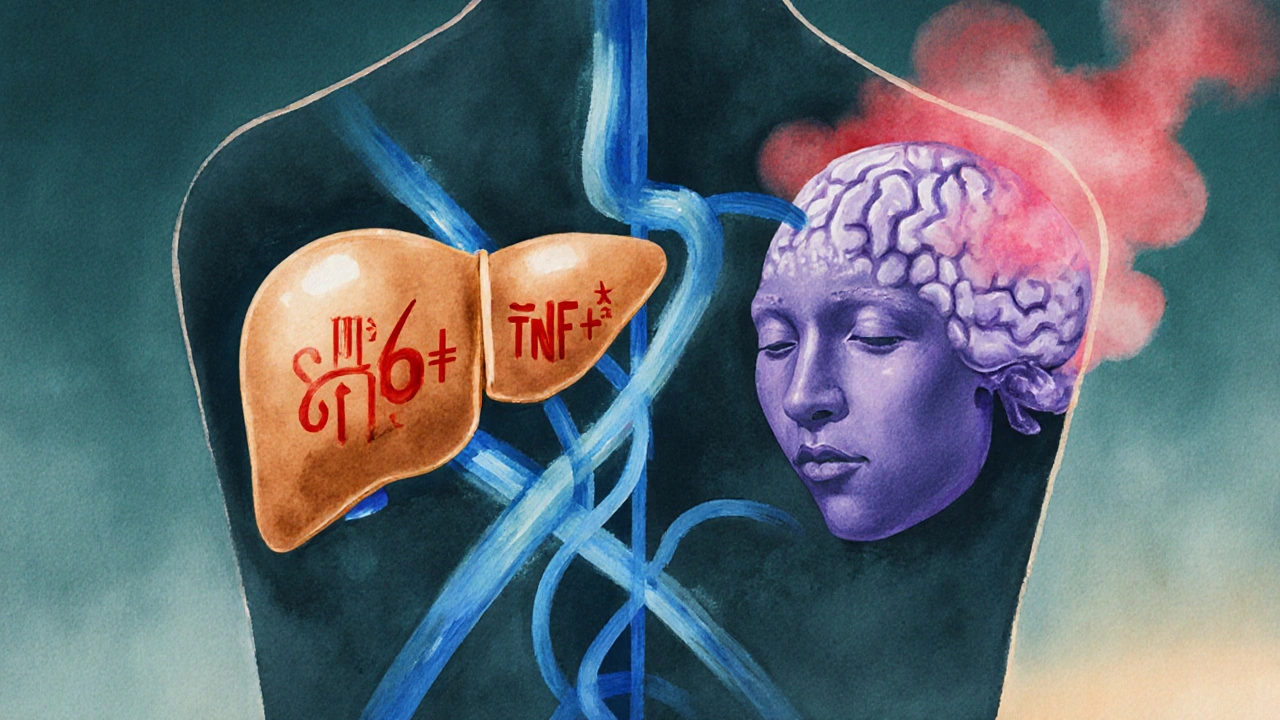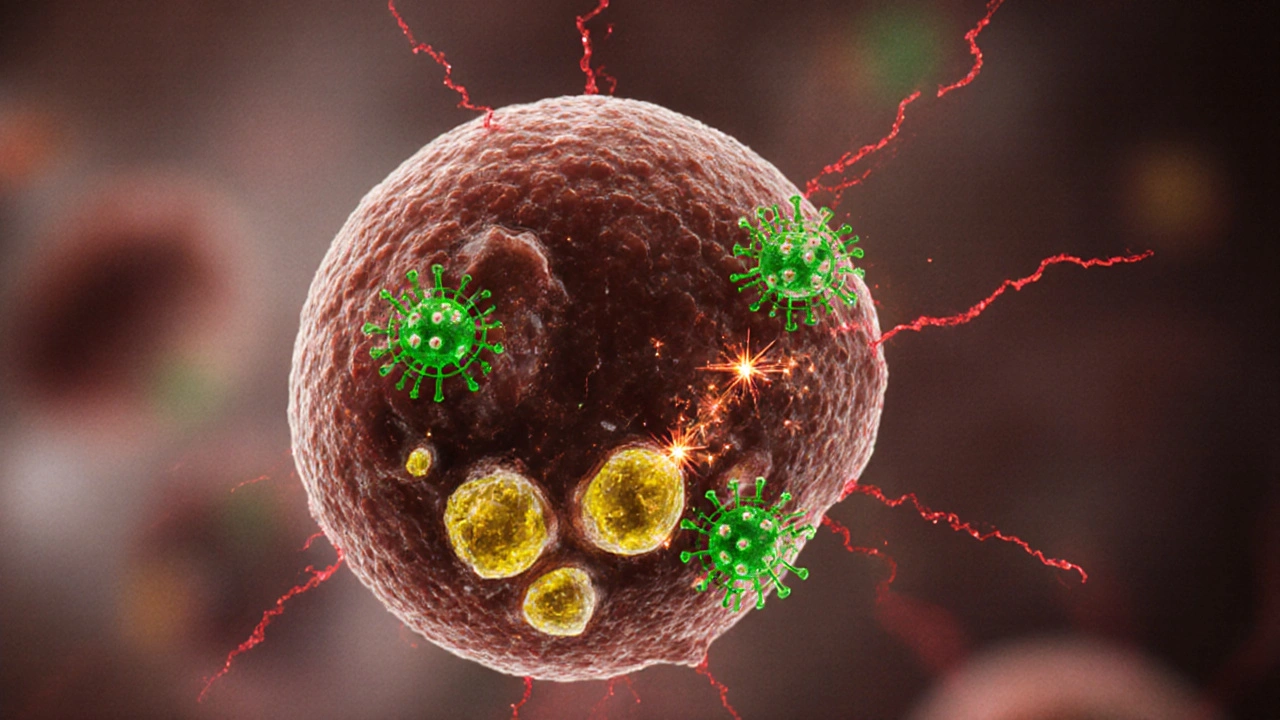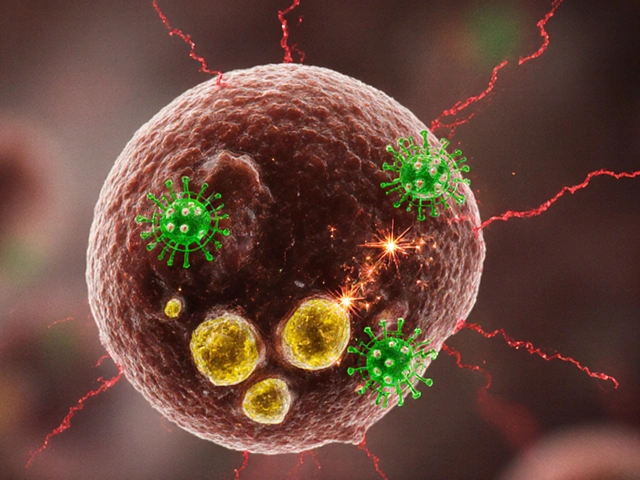Key Takeaways
- Genotype3 of the hepatitisC virus (HCV) is linked to higher rates of persistent fatigue than other genotypes.
- The fatigue stems from a mix of liver inflammation, mitochondrial stress, and cytokine activity.
- Direct‑acting antivirals (DAAs) can reverse most fatigue symptoms, but lifestyle tweaks help during treatment.
- Monitoring liver health, nutrition, and sleep quality speeds recovery.
- Talk to your clinician if fatigue lasts more than three months after therapy.
Ever felt wiped out for no good reason and wondered if your liver might be to blame? If you’ve been diagnosed with Genotype 3 hepatitis C, you’re not alone-fatigue is one of the most common complaints. Below we break down why genotype3 feels especially draining, what’s happening inside your body, and practical steps you can take right now.
Genotype 3 chronic hepatitis C is a form of long‑lasting liver infection caused by a specific genetic variant of the hepatitisC virus. It accounts for roughly 30% of global HCV cases and is unusually linked to metabolic disturbances and marked fatigue.
What Makes Genotype3 Different?
HCV isn’t a single virus; it comes in at least seven genotypes, each with subtle quirks. Genotype3 stands out because it tends to accumulate in liver cells that manage fat metabolism. This leads to steatosis (fatty liver) even without heavy drinking. The extra fat puts stress on mitochondria-the cell’s power plants-making them less efficient and sending fatigue signals to the brain.
Other notable entities involved:
- Hepatitis C virus (HCV): an RNA virus that targets hepatocytes.
- Fatigue: a subjective feeling of tiredness not relieved by rest.
- Mitochondrial dysfunction: impaired energy production inside cells.
- Cytokines (e.g., IL‑6, TNF‑α): inflammatory proteins that can affect brain function.
- Direct‑acting antivirals (DAAs): modern drugs that target HCV’s replication machinery.
- Liver inflammation: immune response that releases fatigue‑inducing messengers.
- Metabolic syndrome: a cluster of conditions (insulin resistance, high triglycerides) that often co‑occur with genotype3.
How Fatigue Develops: The Biological Chain Reaction
Think of your body as a factory. When HCV genotype3 infects liver cells, it rewires the factory’s energy line. Here’s the step‑by‑step cascade:
- Viral entry: HCV binds to receptors (CD81, SR‑B1) on hepatocytes.
- Replication stress: The virus hijacks the cell’s machinery, creating viral proteins that accumulate.
- Lipid overload: Genotype3 interferes with microsomal triglyceride transfer protein, causing fat buildup.
- Mitochondrial damage: Excess fat generates reactive oxygen species, which impair the electron transport chain.
- Cytokine surge: Stressed cells release IL‑6 and TNF‑α, which travel to the brain and trigger “sickness behavior” - a natural response that includes fatigue.
- Neuro‑immune feedback: The brain’s hypothalamus interprets cytokine signals as a need to conserve energy, leading to that heavy‑eyed feeling even after a full night’s sleep.
Researchers at the University of Oxford measured IL‑6 levels in 112 genotype3 patients and found a 2.3‑fold increase compared with genotype1, directly correlating with fatigue severity scores.

How Common Is Fatigue in Genotype3?
| Genotype | Patients surveyed | Reported fatigue (%) | Average fatigue score (0‑10) |
|---|---|---|---|
| 1 | 210 | 38 | 4.2 |
| 2 | 84 | 42 | 4.6 |
| 3 | 112 | 61 | 5.9 |
| 4 | 57 | 35 | 3.9 |
The table makes it clear: genotype3 patients report fatigue roughly 20% more often than those with genotype1, and the intensity is noticeably higher.
Managing Fatigue During and After Treatment
Good news-modern DAAs (e.g., sofosbuvir/velpatasvir) clear over 95% of genotype3 infections in 12 weeks. As the virus disappears, cytokine levels drop, and mitochondrial function begins to rebound. Still, many people notice lingering tiredness for weeks or months after therapy.
Medical strategies
- Start DAAs early: The sooner you eliminate the virus, the less time the body spends in an inflammatory state.
- Check for anemia: Some patients develop ribavirin‑induced anemia, which can amplify fatigue. A simple blood test can catch this.
- Screen for thyroid issues: HCV can affect thyroid hormone balance; low T3/T4 often masquerades as fatigue.
Lifestyle tweaks that truly help
- Gentle movement: 20‑minute walks or light yoga boost mitochondrial biogenesis and improve sleep quality.
- Protein‑rich meals: Aim for 1.2g/kg body weight daily to support liver regeneration.
- Hydration: Dehydration worsens perceived effort; sip water throughout the day.
- Sleep hygiene: Keep a dark, cool bedroom, limit screens an hour before bedtime, and try a consistent wake‑up time.
- Mind‑body practices: Meditation or progressive muscle relaxation can lower circulating IL‑6 levels, as shown in a 2023 pilot study.

When to Seek Professional Help
If fatigue meets any of the following, book a follow‑up:
- It lasts longer than three months after completing DAAs.
- You notice sudden weight loss, jaundice, or abdominal pain.
- Sleep doesn’t improve despite good sleep hygiene.
- Blood tests show persistent elevation of ALT/AST or inflammatory markers.
Your clinician may order a FibroScan to gauge liver stiffness or refer you to a hepatology‑focused physiotherapist for a tailored exercise plan.
Future Directions: Research on Genotype3 Fatigue
Scientists are exploring two promising avenues:
- Mitochondrial protectants: Compounds like mito‑Q are in early‑phase trials aiming to shield mitochondria during HCV infection.
- Anti‑cytokine therapy: Low‑dose IL‑6 inhibitors have shown modest fatigue reduction in a small 2024 study, though safety in liver disease remains under review.
While these options aren’t mainstream yet, they hint at a future where fatigue could be tackled directly, not just as a side‑effect of infection.
Frequently Asked Questions
Why do I feel so tired even after the virus is cured?
Even after the virus disappears, the liver and immune system need time to reset. Residual inflammation, lingering mitochondrial stress, and any co‑existing conditions (like anemia or thyroid imbalance) can keep fatigue going for weeks or months.
Is fatigue more common in genotype3 than in other genotypes?
Yes. Multiple cohort studies up to 2024 show genotype3 patients report fatigue in about 60% of cases, compared with roughly 35‑40% for genotype1 or 4. The higher rate is linked to the genotype’s effect on liver fat and mitochondrial health.
Can diet alone reduce my fatigue?
Diet helps but isn’t a cure by itself. Reducing sugary and saturated fats lowers liver steatosis, while adequate protein supports regeneration. Pairing these changes with exercise and proper sleep yields the best results.
Should I avoid alcohol completely while I have genotype3?
Alcohol accelerates liver damage and worsens fatigue. The safest approach is total abstinence during treatment and for several months after viral clearance.
Are there any supplements that support mitochondrial health?
CoenzymeQ10, alpha‑lipoic acid, and omega‑3 fatty acids have modest evidence for boosting mitochondrial function. Talk to your doctor before adding any supplement, especially if you’re on DAAs.



jake cole
October 14, 2025 AT 16:03This whole fatigue hype is overblown. The data you cited is old and cherry‑picked. Patients don’t need a lecture about mitochondria when the real problem is delayed treatment. Stop feeding people anxiety and push for early DAA therapy.
Natalie Goldswain
October 27, 2025 AT 02:07i think the tips are solid but kinda obvious definatly.
Melissa Trebouhansingh
November 8, 2025 AT 17:44Genotype 3 exhibits a metabolic profile that distinguishes it from other variants. The viral replication burden imposes a chronic inflammatory state. Cytokine release perpetuates systemic fatigue. Mitochondrial biogenesis is hindered by lipid overload. Hepatocytes accumulate triglycerides in a manner that is unique to this genotype. This steatotic environment generates reactive oxygen species. Oxidative stress further depresses ATP synthesis. Neural circuits interpret these peripheral signals as central exhaustion. Clinical scales consistently record higher fatigue scores among genotype 3 cohorts. Therapeutic clearance of the virus reverses many of these pathways. Nevertheless residual inflammation may linger beyond viral eradication. Nutritional support can accelerate hepatic recovery. Aerobic activity stimulates mitochondrial turnover. Adequate sleep consolidates neuro‑immune resetting. Ultimately a multidisciplinary approach yields the best patient outcomes.
maurice screti
November 20, 2025 AT 14:09When we discuss genotype 3 fatigue we must first acknowledge the biochemical nuance that sets it apart. The accumulation of intra‑hepatic fat creates a substrate for oxidative damage, which in turn depresses mitochondrial efficiency. This cascade is not merely a textbook footnote; it manifests as a tangible reduction in daily vigor for patients. Moreover, the cytokine milieu, rich in interleukin‑6, compounds the central nervous system’s perception of lethargy. While antivirals address viral load, they do not instantly normalize metabolic flux, so adjunct strategies are warranted. Incorporating light resistance training can stimulate mitochondrial proliferation, a point often overlooked in clinical briefs. Dietary modulation-particularly reducing fructose intake-further eases hepatic steatosis. In sum, a holistic regimen complements pharmacologic clearance to restore energy homeostasis.
Abigail Adams
December 2, 2025 AT 12:29The premise that fatigue is solely a psychosomatic complaint is fundamentally flawed. Empirical evidence demonstrates a quantifiable rise in IL‑6 among genotype 3 patients, correlating with self‑reported exhaustion. Ignoring this inflammatory signature undermines both clinical responsibility and patient trust. It is incumbent upon practitioners to screen for anemia and thyroid dysfunction before attributing tiredness to “just a virus”. Furthermore, the literature on mitochondrial protectants, though preliminary, suggests a viable adjunctive pathway. Dismissing these findings as speculative reflects a complacent attitude that does little for sufferers. Ultimately, a nuanced, evidence‑based approach is the only ethical course of action.